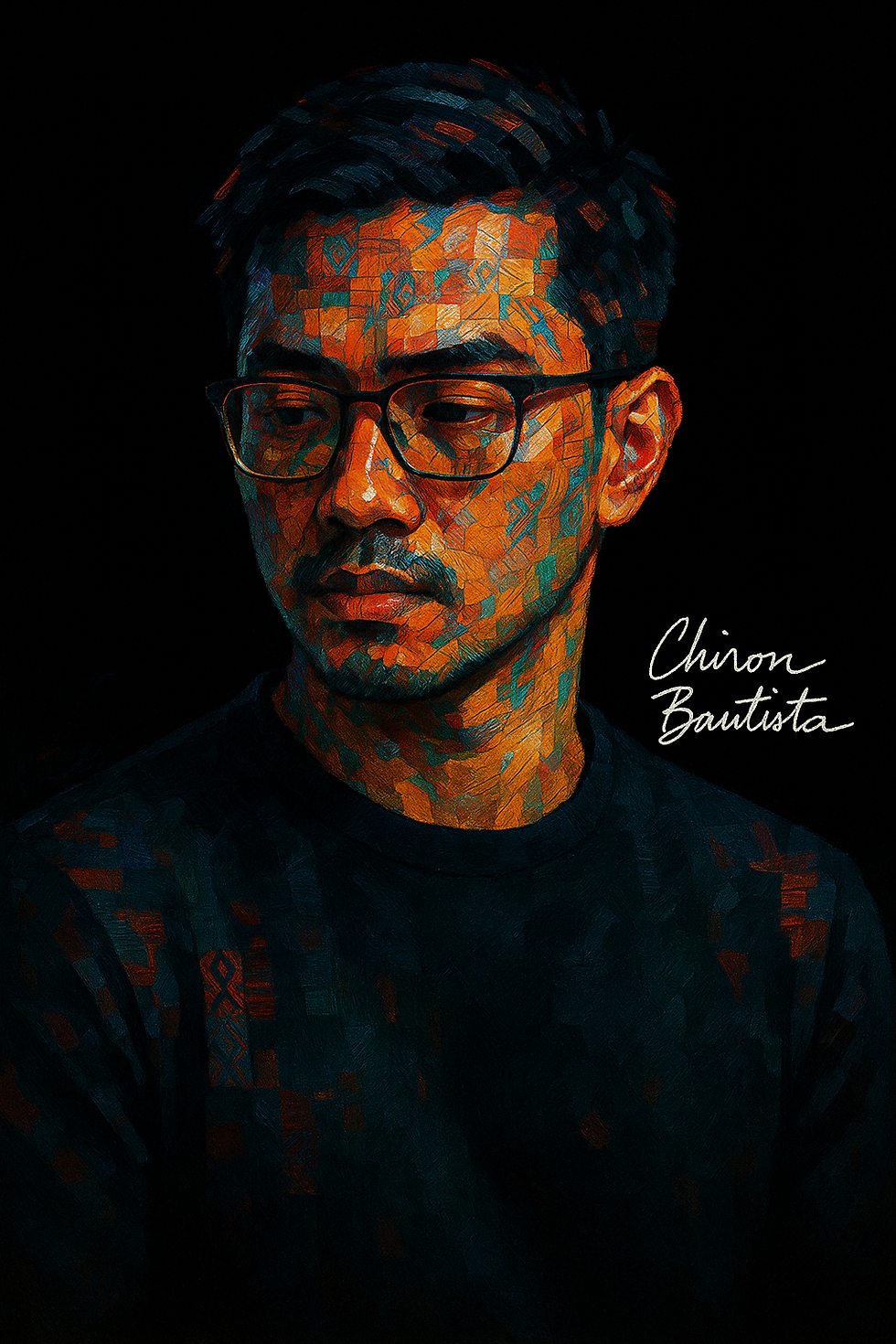Why Chiron Bautista Created ALAISMO
- chiron@alaismo.com
- Jun 13
- 2 min read

Chiron Bautista Created Alaismo
An Origin Story of Fractured Memory and Mosaic Truths
Chiron Bautista did not set out to create a new art movement. Alaismo was not born from ambition, but from necessity—an instinctive act of preservation in the face of forgetting.
As a digital native raised on pixels yet haunted by ancestral silences, Bautista grew up navigating the spaces between canvas, screens and stories. Bautista was acutely aware of the ways heritage—Filipino, diasporic, fragmented—was often reduced to footnotes in history books or echoes in broken dialects. Family albums had gaps where names should be. Folktales came like whispers through walls, incomplete and yet pulsing with the weight of memory.
It was this tension—between presence and absence, modernity and myth—that birthed Alaismo.
The name itself is layered. “Alaismo” is a portmanteau of alaala (memory) and ismo (from the suffix denoting movement or ideology). But it also carries the cadence of “alias”—a false name, a hidden identity. Alaismo is thus the art of remembering what was never clearly known, of stitching together a self from scattered data and intuitive reconstructions.
Bautista’s first Alaismo works emerged during a period of creative burnout. Trained in both traditional portraiture and digital design, he found himself dissatisfied with hyperrealism and uninspired by minimalist trends. In an act of creative rebellion, he began experimenting with “digital mosaics”—portraits composed not of smooth gradients but of brushstrokes that mimicked broken tiles, each stroke a fragment, a clue.
To his surprise, something in the chaos spoke back. The process was laborious, meditative. It felt like piecing together the face of a long-lost relative from memory alone. Every stroke was a decision: what to reveal, what to distort, what to forget. These weren’t just portraits—they were ancestral algorithms, filtered through a contemporary lens.
Alaismo evolved from there—not just a style, but a philosophy. It rejects perfection. It embraces glitches, distortions, misremembrances. In Alaismo, the truth is always partial and beautiful in its incompleteness. Bautista began using it not only to depict people but to explore identity, history, and even speculative futures.
Today, Alaismo stands as both a personal practice and an open invitation. It asks: What if memory itself could be rendered in color and code? What if the self is not a singular image but a mosaic of shifting shapes? Through this philosophy, Chiron Bautista gives voice to the unsaid, pixel by pixel.
Comentarios